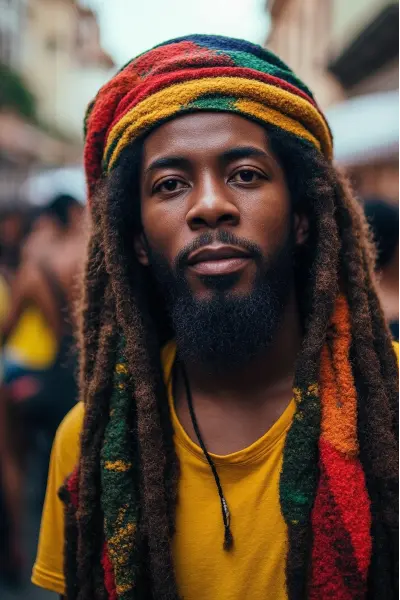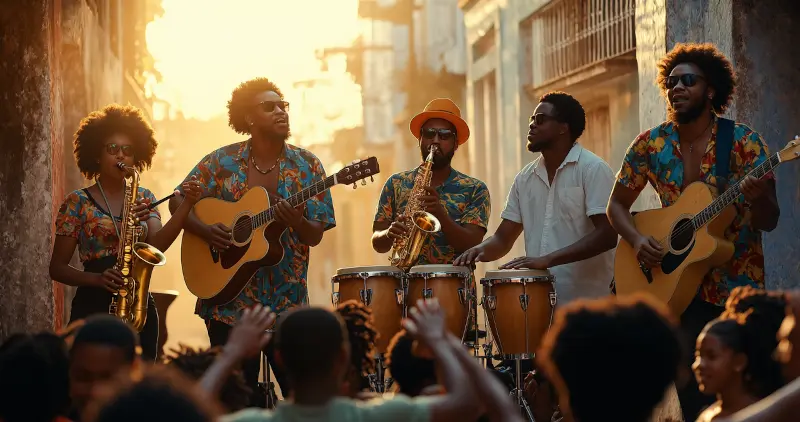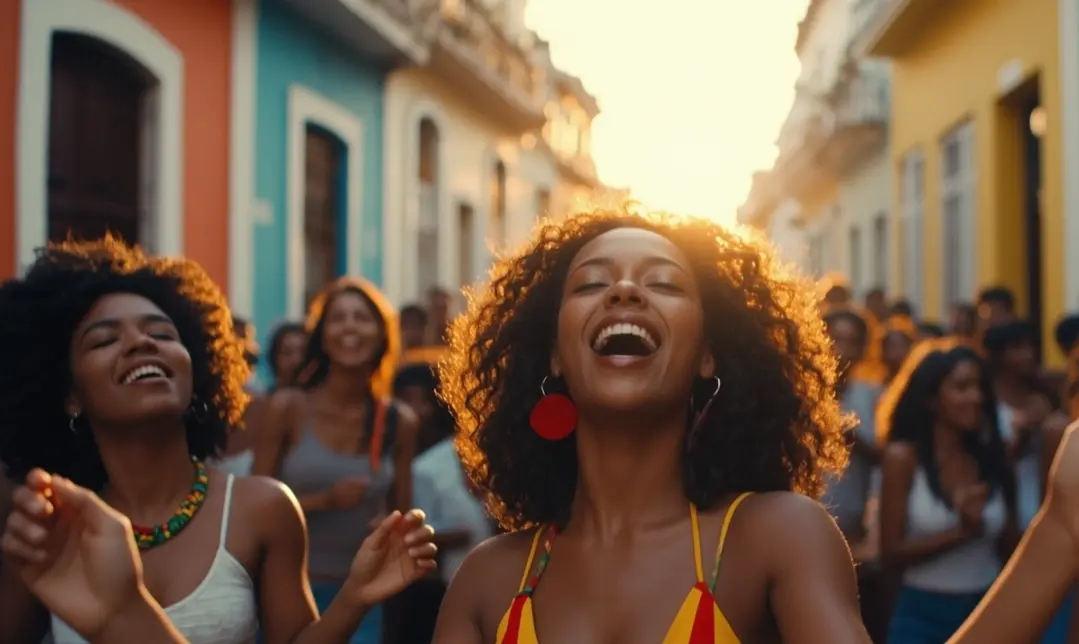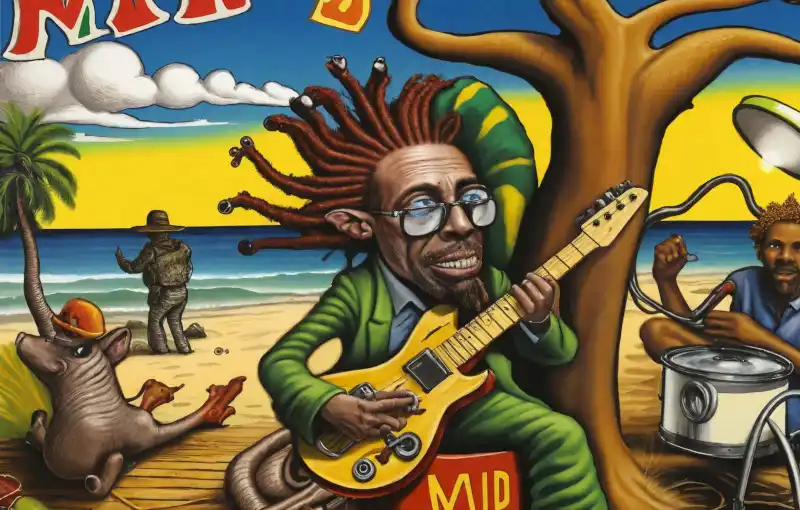
Our reggae music guide starts with its inception in Jamaica before discussing how it captured the world.
Reggae music is known for its special rhythm and focus on fairness, but its definition requires more more than understanding the music, you have to understand the movement.
What is Reggae
For newcomers, diving into reggae music is exciting. You will learn the basics of reggae with this guide. You will discover its background and the impact it has on individuals. You’ll appreciate reggae even more if you learn about its origins.
The Sound of Reggae Music

What is Reggae? Understanding the Foundations
Reggae music comes from Jamaica’s culture and music. It shows the island’s history, social issues, and identity. Its sound has won fans everywhere.

The Birth of Reggae in 1960s Jamaica
The 1960s were key for Jamaican music. This is when reggae started to form as its own genre. The music slowed down and focused on the “one drop” rhythm.
Defining the Unique Sound and Style
Reggae music has a special rhythm, called the “one drop” rhythm. It focuses on the third beat in a 4/4 time. This rhythm, with strong bass lines, makes reggae sound unique. It also mixes in traditional Jamaican music, like mento and calypso.
Reggae is not just music; it’s a way to share messages. Its songs talk about social issues, politics, and personal struggles. This makes reggae a strong voice for expression and communication.
The Etymology and Origin of the Term “Reggae”
The word “reggae” comes from “rege-rege,” meaning a ragged music style. It grew from Jamaican music like ska and rocksteady in the late 1960s. The Toots and the Maytals made “reggae” famous with their 1968 song “Do the Reggay.”
Key parts of reggae include:
- A strong rhythm and bass focus
- Songs that talk about social justice and identity
- A mix of Jamaican music and international sounds
These features, along with its unique sound, have made reggae popular worldwide.
The Historical Roots of Reggae
Jamaican music changed a lot in the 1960s. This change led to the birth of reggae. It mixed different music styles and cultural influences.
From Mento and Ska to Early Reggae
Mento and calypso were the roots of reggae. Mento came in the 1940s and 1950s. It had folk sounds and talked about daily life and social issues. As American R&B and jazz became popular in Jamaica, musicians mixed them with mento. This created ska. Ska’s fast rhythm helped start reggae.

The Birth of Reggae in 1960s Jamaica
The 1960s were key for Jamaican music. This is when reggae started to form as its own genre. The music slowed down and focused on the “one drop” rhythm. Artists and producers like Bob Marley and The Wailers became very important as they helped shape early reggae.
Key Pioneers and Early Recordings
Artists like Bob Marley and The Wailers, Toots and the Maytals, were pioneers. Producers like Clement “Coxsone” Dodd also played a big role. Their early songs helped define reggae.
- The Skatalites: A influential group that blended ska and calypso.
- Toots and the Maytals: Known for their energetic live performances and hits like “Pressure Drop.”
- Reggae was greatly influenced by the innovative producer Clement “Coxsone” Dodd.
Key Musical Elements of Reggae
Reggae music has special sounds that make it unique. It mixes different rhythms and instruments in a special way. This mix creates its own special sound.
The Distinctive Reggae Beat and Rhythm
The reggae beat is slow and steady. It’s called “one drop” rhythm. This rhythm puts the beat on the third count in a 4/4 time.This rhythm makes reggae feel laid-back and special. The drums and bass are key in setting this beat. They use offbeat rhythms and syncopation to make the music richer.

Bass Lines and the “One Drop”
The bass line in reggae is more than just a base. It’s a melody that moves the song along. The bass plays a major role in the “one drop” beat, which is crucial.
- The bass provides the low-end melody.
- It creates the “one drop” impression in conjunction with the drums.
- This emphasis on the third beat makes reggae unique.
Instrumentation in Reggae Music
Reggae music uses many instruments. Guitars, keyboards, drums, and bass all play a part. Each one adds to the sound in its own way.
The Role of Guitar Skank and Organ Bubble
The guitar in reggae plays a “skank” rhythm. This rhythm adds texture to the music. The organ adds a full sound, often creating a “bubble” effect that goes well with the guitar.

Rastafari and Reggae: The Spiritual Connection
Reggae music has a deep spiritual link to Rastafari. This movement has shaped the genre’s identity. It’s not just about religious beliefs but also a cultural and social story.
Rastafarian Beliefs and Influences
Rastafari started in Jamaica in the 1930s. It considers the former Ethiopian Emperor Haile Selassie I to be divine. It stands for unity, equality, and fighting against oppression. These ideas are frequently included into the music and opinions of reggae singers.
Religious Themes in Reggae Lyrics
Reggae music often talks about religious themes. Many artists mention biblical scripture and Haile Selassie’s divinity. These themes are not just about religion but also about fighting for social justice and returning to Africa.
Haile Selassie and Repatriation in Reggae
Haile Selassie is key to Rastafari and reggae. Many songs mention him as a symbol of African unity and freedom. The idea of returning to Africa is also big, showing Rastafarian dreams of going back to their homeland.
The bond between Rastafari and reggae shows music’s power. Through reggae, Rastafari’s messages of justice and equality reach people all over the world.
Bob Marley and the Golden Age of Reggae
Bob Marley and The Wailers made reggae famous worldwide. The 1970s were key for reggae, with Bob Marley leading the way.
The Rise of Bob Marley and The Wailers
The Wailers and Bob Marley were founded in the 1960s.. But the 1970s were when they really hit it big. Their music mixed reggae beats with messages of unity and change.Albums like “Catch a Fire” and “Burnin’” helped spread reggae far and wide. Bob Marley’s charisma and songwriting made him a global star.
Other Influential Artists of the 1970s
Other artists also shaped reggae in the 1970s. Peter Tosh, Bunny Wailer, and Jimmy Cliff each brought their own style to the genre.
Peter Tosh, Bunny Wailer, and Jimmy Cliff
Peter Tosh’s powerful voice and messages were well-known. He released albums like “Equal Rights.” Bunny Wailer, another Wailers member, made a big impact with his solo work.Jimmy Cliff, famous for “I Can See Clearly Now,” helped spread reggae globally. These artists helped shape reggae in the 1970s and inspired many after them.
Reggae’s Global Impact and Cultural Significance
Reggae music has reached people all over the world. It touches hearts and inspires change. This music has influenced music and become a big part of culture and society.
How Reggae Conquered the World
Reggae music started in Jamaica and spread to the world. Artists like Bob Marley and Peter Tosh helped it reach far. They made it popular for other Jamaican artists too.
The music’s unique beat and messages of change connected with many. It became a key part of music everywhere.
Reggae as a Voice for Social Justice
Reggae music has always spoken out for justice. It talks about fairness, freedom, and human rights. Its songs of unity and fight have moved people everywhere.
Reggae’s Role in Anti-Apartheid and Civil Rights Movements
Reggae was key in the fight against apartheid in South Africa. Artists sang against apartheid and for equality. It also helped the civil rights movement in the U.S., with songs for protests.
Reggae keeps inspiring and uniting people globally. It spreads love, unity, and justice everywhere.
Subgenres of Reggae Music
Reggae music is not just one thing. It has many subgenres that have grown over time. Each one adds to the richness and variety of reggae.
Roots Reggae
Roots reggae is all about the Rastafarian movement. It talks about spiritual and cultural themes. It focuses on the African diaspora and social justice, with powerful lyrics.
Artists like Bob Marley and Peter Tosh are key in this area.
Dub and Studio Innovation
Dub reggae started as a studio thing. It’s about instrumental versions of songs, with a big focus on drum and bass. It uses remixing and audio effects like reverb and delay.
Dub has shaped not just reggae but other genres too.

Dancehall Evolution
Dancehall is fast and upbeat, starting in the late 1970s. It has quick rhythms and modern, less spiritual lyrics. It has grown, influencing hip-hop and pop.
Reggae Fusion and Modern Variations
Reggae fusion mixes reggae with rock, pop, and hip-hop. It brings new sounds and attracts more listeners. Modern reggae artists keep making new fusions, keeping the genre fresh.
In short, reggae’s subgenres show its flexibility and growth. From roots to fusion, each adds to reggae’s rich mix, keeping it loved and relevant.
Essential Reggae Albums for Beginners
Reggae music has a rich history. For beginners, some albums are key to start with. They introduce the genre’s sound and its cultural and musical depth.
Classic Reggae Albums to Start With
Classic reggae albums set the stage for the genre. Bob Marley & The Wailers’ “Catch a Fire” (1973) and “Burnin'” (1973) show reggae’s growth. Another must-listen is “The Harder They Come” (1972), the soundtrack to the film, featuring Jimmy Cliff.
These albums are more than just history. They still shape music today. Bob Marley once said,
“One good thing about music, when it hits you, you feel no pain.”
This quote shows reggae’s healing and uniting power.
Modern Reggae Recommendations
Modern reggae keeps evolving, mixing new styles with its roots. Artists like Chronixx and Protoje lead this change. Their albums, like Chronixx’s “Chronology” (2017) and Protoje’s “Third Time’s the Charm” (2015), are great to start with.
For a mix of old and new, check out “Reggae Essentials” on Spotify. “The Rough Guide to Reggae” is also a great compilation. It covers many artists and styles.
Exploring these albums and playlists helps you understand and love reggae more. Whether you like the classics or modern sounds, there’s plenty to discover.
Reggae in the Modern Era
Reggae music has grown and changed over time. It brings fresh concepts while maintaining its heritage. People from all over the world adore it because of its blend of the ancient and the new.
Contemporary Reggae Artists
Today, many artists are making reggae music their own. Chronixx and Protoje are at the forefront. They blend contemporary sounds with classic reggae.
The Evolution of Reggae in the 21st Century
In the 21st century, reggae has taken on new forms. Artists are now able to share their songs globally thanks to the internet. Reggae has become popular once more as a result.
Reggae Festivals and Global Communities
Reggae festivals are key to the genre’s life. They connect fans and artists from all around the world. Events like Reggae Sumfest and One Love Festival honor reggae’s past and present.
|
Festival |
Location |
Notable Performers |
|
Reggae Sumfest |
Jamaica |
Chronixx, Protoje |
|
One Love Festival |
Trinidad and Tobago |
Alborosie, Ky-Mani Marley |
Conclusion: The Spirit of Reggae
Reggae music is more than it first seems. At it’s heart, it is simply a musical style, but reggae is far more. The culture of reggae aspires to love and harmony. Resistance is fostered by its lyrics.
Its rich history, iconic sounds, and global impact have all been examined.
It demonstrates the ability of music to unify and inspire.
The values of freedom, justice, and equality are central to reggae. Artists like Bob Marley and The Wailers taught us these values. Today, reggae continues to uphold these ideals while gaining new admirers.
Knowing and loving reggae’s history and meaning connects us to its community. Whether you’ve loved reggae for years or are just starting, there’s always more to discover. This is a lively, meaningful and inspiring genre of music.

FAQ
What is the difference between reggae and other genres of music?
Reggae music stands out because of its unique sound and style. It focuses on rhythm, bass, and meaningful lyrics. It’s often influenced by Rastafarian beliefs.
Bob Marley and reggae music
As the world’s most popular reggae musician, Bob Marley is key in reggae music. He made it popular worldwide. His songs talk about unity, love, and justice, inspiring many.
What are the different sub genres of reggae music?
Reggae has many subgenres like roots reggae and dancehall. Roots reggae talks about spirituality and social issues. Dancehall is all about lively beats.
How did reggae music influence social justice movements?
Fighting for justice, such as against apartheid, was aided by reggae music. Artists like Bob Marley used their songs to speak out and protest.
What is the “one drop” rhythm in reggae music?
The “one drop” rhythm is a key part of reggae. It puts the focus on the third beat in a 4/4 rhythm. The unique, offbeat sound of the drumbeat is what makes reggae different.
Who are some contemporary reggae artists worth listening to?
Reggae is still alive today thanks to musicians like Protoje and Chronixx. They keep the music current by fusing new and old styles.
What are some essential reggae albums for beginners?
For new fans, start with Bob Marley’s “One Love” and “Catch a Fire.” Peter Tosh’s “Equal Rights” is also great. Try Chronixx’s “Chronology” and Protoje’s “Ancient Future” too.
How has reggae music evolved?
Reggae has changed a lot since the 1960s in Jamaica. Music, society, and culture have all had an influence on the original sound over the decades. It still, however, maintains its essential essence despite having numerous subgenres nowadays. It still maintains its essential essence despite having numerous subgenres nowadays.

